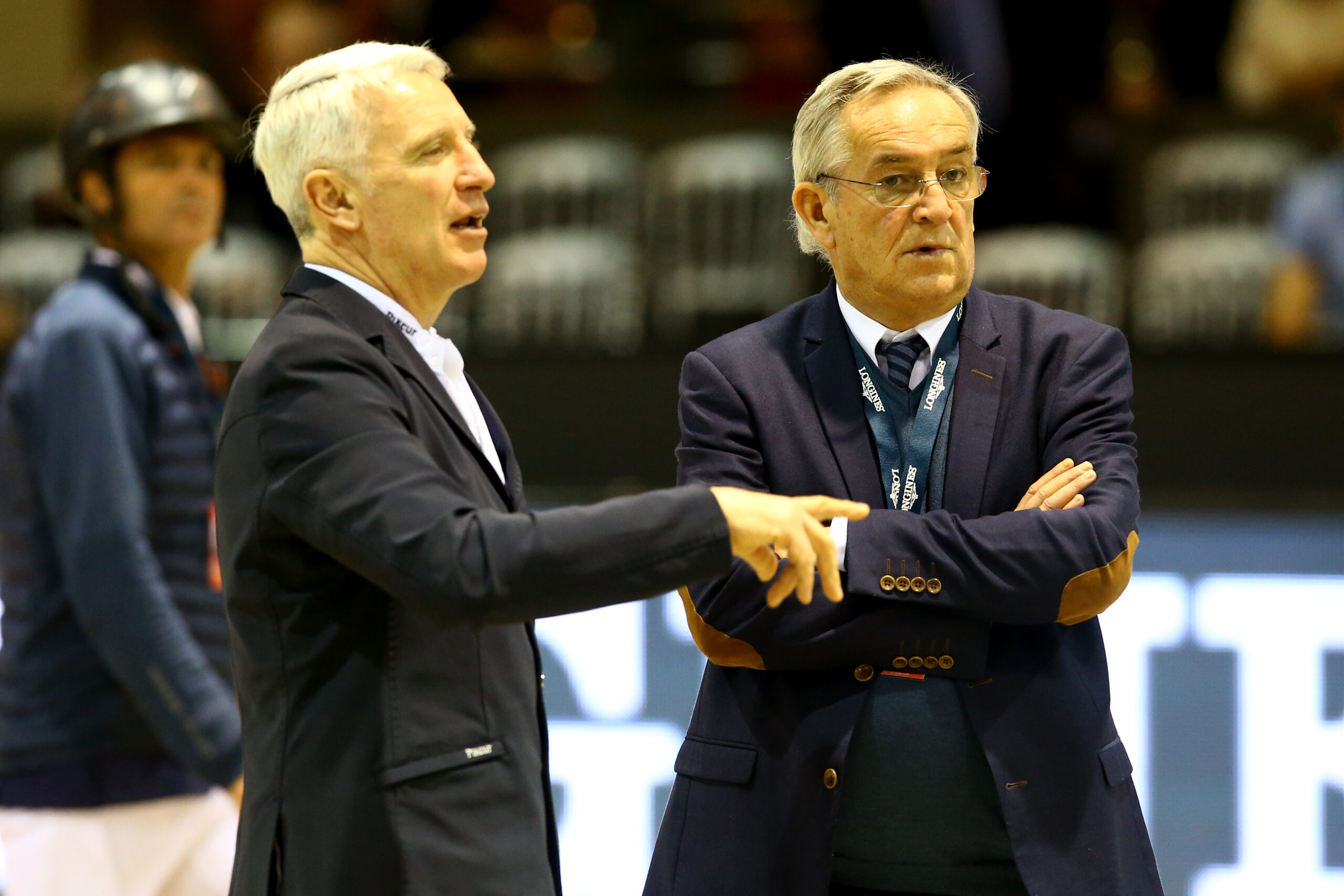For a long time, the physical preparation of the athlete, whether human or equine, was empirical; today, scientific knowledge concerning the athlete under stress has become much more diversified and in-depth, and it is common for the trainer to surround himself with a multi-disciplinary team which may include a physical trainer, a mental trainer, a physiotherapist, and a sports doctor. Horse training is no exception to this trend, and we are now seeing, in top-level competition, physical preparation of the horse that considers the latest knowledge of exercise physiology.

Fueling the horse’s muscles
Muscles need energy to function. Muscle cells draw on their reserves, of which there are 3 types: energy (A.T.P. and PC.), sugars (glycogen) and fats (lipids). A.T.P. is the only fuel usable by the muscle cell. Available in very small quantities, it is depleted in a matter of seconds (1 to 3″), so it must be constantly replenished from sugars and fats. To achieve this, the body has two carburation systems: aerobiosis and anaerobiosis (fig. I). Aerobiosis requires the presence of oxygen, which is inhaled by the lungs and carried to the muscle cell by the blood. The waste products of these combustions are carbon dioxide and water and are eliminated by respiration. This highly energy-efficient mode of combustion is suited to prolonged, medium-intensity exercise.
Anaerobiosis (equivalent to turbo) is used for intense, short-duration exercise (3 to 10 minutes). To provide this violent effort, the quantity of oxygen supplied to the muscle cell becomes insufficient. The transformation of sugars into energy is accompanied by a high production of waste products (including lactic acid), which will lead to the effort coming to a halt. Together, these phenomena constitute the energy pathways. Although they are common to both humans and horses, their flow rates and start-up times differ from one to the other.
Each sporting discipline, depending on its specificity, makes predominant use of one or other of these systems; training methods are designed to develop the energy system most in demand.
The horse’s heart and lungs, the driving force behind physical exercise
The joint action of the heart and lungs is to supply the muscles with the oxygen they need. Cardiac activity is measured by heart rate, which is proportional to the intensity of effort: it’s the equivalent of the tachometer on a racing car. Heart rate is easily measured in the field using heart rate monitors, which are just as easy to use on horses as they are on humans. The horse’s cardiac capacity for effort is much greater than that of man (from 40 beats per minute at rest, the heart rate can reach 240 beats). On the other hand, the trained horse is limited by its respiratory function, which cannot develop and thus becomes the equine athlete’s weak point.
Lactic threshold, the carburation index
The athlete’s engine has a carburation index: the lactic threshold. This corresponds to a blood lactic acid concentration of around 4 mmol/1 (identical in humans and horses). This anaerobic threshold corresponds to the upper limit of endurance training (aerobic capacity). Beyond this limit, the rapid and significant accumulation of lactic acid will lead to the cessation of physical activity.
Exercise test on horseback
The aim of this test is to determine the speed and heart rate corresponding to the anaerobic threshold. It consists in having the athlete, whether man or horse, perform an effort of progressively increasing intensity, in successive stages (from 3 to 5), lasting a minimum of 2 to 3 minutes, separated by short intervals. Heart rate is recorded throughout the exercise. At the end of each interval, lactic acid concentration in the blood is measured. These parameters: speed and heart rate, at the threshold value of 4 mmol/1, enable the trainer to assess the athlete’s endurance capacity and control the intensity of endurance training.
Training on horseback
Before any physical conditioning, the athlete’s state of health and ability to tolerate workloads must be checked. Training will take into account the energy systems required by the sport, while respecting the fundamental rules of training:
- development of endurance (aerobic process) has priority (2 to 3 months);
- endurance development requires 2 or 3 weekly sessions;
- for greater efficiency, the intensity of work in each pathway (endurance or power) should be close to its maximum;
- intense sessions call for interval training;
- power training should not be carried out more than once a week;
- a certain variety in sessions is necessary;
- periods of light work will enable the previous work to be assimilated;
- every training session must be preceded by a warm-up and followed by a cool-down.
The physical preparation of the athlete increasingly considers the physiological data of the effort that the trainer integrates into his daily work, nevertheless sporting performance is the conjunction of several factors within which physical preparation represents only one link. The trainer must take all these links into account and ensure their harmonious development.
Empiricism has long prevailed in the training of the human athlete, but science has gradually become a daily tool for the human trainer. The existence of significant fundamental research in horses made it logical to propose a similar approach for the conditioning of the equine athlete; but this was without considering the passionate environment that surrounds the horse…


